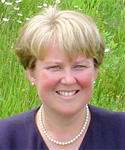
Lisa Cleckner

Lisa ClecknerDirector of Finger Lakes Institute
Joined faculty in 2010
MBA, Simon School, University of Rochester
PhD, Environmental Health Sciences, University of Michigan
MPH, Environmental Health Sciences, University of Michigan
BA, Biology, Colgate University
Contact Information
Publications
Brown, M.E., K.L. Buffington, L.B. Cleckner, N.R. Razavi. 2022. Elevated methylmercury concentration and trophic position of the non-native bloody red shrimp (Hemimysis anomala) increase biomagnification risk in nearshore food webs. Journal of Great Lakes Research. 0.1016/j.jglr.2021.11.010
Webster, A.M., L.B. Cleckner, N.R. Razavi. 2021. Mercury Concentrations in Big Brown Bats (Eptesicus fuscus) of the Finger Lakes Region, New York. Archives of Environmental Contamination and Toxicology. DOI: 10.1007/s00244-021-00839-x.
Twining, C., N.R. Razavi, T. Brenna, S. Dzielski, S. Gonzalez, P. Lawrence, L.B. Cleckner, A.S. Flecker. 2021. Emergent Freshwater Insects Serve as Subsidies of Methylmercury and Beneficial Fatty Acids for Riparian Predators Across an Agricultural Gradient. Environmental Science and Technology. DOI: 10.1021/acs.est.0c07683.
Riva-Murray, K., Richter, W., Razavi, N.R., Burns, D.A., Cleckner, L.B., Burton, M., George, S., Freehafer, D. 2020. Mercury in fish from streams and rivers in New York State: Spatial patterns, temporal changes, and environmental drivers. Ecotoxicology. DOI: 10.1007/s10646-020-02225-0.
Razavi, N.R., J.D. Halfman, S.F. Cushman, T. Massey, R. Beutner, J. Foust, B. Gilman, L.B. Cleckner. 2020. Mercury concentrations in fish and invertebrates of the Finger Lakes in central New York, USA. Ecotoxicology. DOI: 10.1007/s10646-019-02132-z
Talmage, C., Lewis, R., Flowers, K., Cleckner, L. 2020. Community innovation and small liberal arts colleges: lessons learned from local partnerships and sustainable community development. In R. Phillips, E. Trevan, P. Kraeger (Ed.) The Research Handbook on Community Development. pp. 416-438. Edward Edgar Publishing.
Dzielski, S.A., Razavi, N.R., Twining, C.W., Cleckner, L.B., Rohwer, V.G. 2019. Reconstructing avian mercury concentrations through time using museum specimens from New York State. Ecotoxicology. DOI 10.1007/s10646-019-02123-0.
Razavi, N.R., S.F. Cushman, S.F., Halfman, J.D., Massey, T., Beutner, R., Cleckner, L.B. 2019. Mercury bioaccumulation in stream food webs of the Finger Lakes in central New York State, USA, Ecotoxicology and Environmental Safety. 172: 265-72.
Cleckner, L.B., Razavi, N.R., Halfman, J. 2017. Water quality and algal community dynamics in the Finger Lakes. Final Report to NYS Water Resources Institute. 7 pp.
Sharp, R.L., Cleckner, L.B., DePillo, S. 2016. The impact of on-site educational outreach on recreational users’ perceptions of aquatic invasive species and their management, Environmental Education Research. https://doi.org/10.1080/13504622.2016.1174983.
Satish, U., L.B. Cleckner, J. Vasselli. 2013. Impact of VOCs on decision making and productivity. Intelligent Buildings International, 5(4) DOI: 10.1007/s10646-019-02132-z
Drevnick, P.E., D.E. Canfield, P.R. Gorski, A.L.C. Shinneman, D.R. Engstrom, D.C.G. Muir, G.R. Smith, P.J. Garrison, L.B. Cleckner, J.P. Hurley, R.B. Noble, R.R. Otter, and J.T. Oris. 2007. Sulfate deposition controls mercury accumulation in fish in boreal lakes, Environmental Science and Technology. 41:7266-7272.
Chen, W., J. Zhang, and L. Cleckner. 2007. Air cleaner effectiveness for removing indoor VOCs. ASHRAE IAQ Applications. 8:1-5.
Satish, U., S. Streufert, L.B. Cleckner, and J.J. Vasselli. 2006. Pilot Study Using a Strategic Management Simulation Tool to Assess Human Performance. Proceedings of the Air & Waste Management Association's (A&WMA) Indoor Environmental Quality: Problems, Research & Solutions. July 17-19, Durham, NC.
Hall, B.D., H. Manolopoulos, J.P. Hurley, J.J. Schauer, V.L. St. Louis, D. Kenski, J. Graydon, C.L. Babiarz, L.B. Cleckner, and G.J. Keeler. 2005. Methyl and total mercury in precipitation in the Great Lakes region. Atmospheric Environment. 39:7557-7569.
Cleckner, L.B., R. Back, P.R. Gorski, J.P. Hurley and S.M. Byler. 2003. Seasonal and size-specific distribution of methylmercury in seston and zooplankton of two contrasting Great Lakes embayments. Journal of Great Lakes Research. 29:134-144.
Rolfhus, K.R., H.E. Sakamoto, L.B. Cleckner, R.W. Stoor, C.L. Babiarz, R.C. Back, H. Manolopoulos and J.P. Hurley. 2003. Distribution and fluxes of total and methylmercury in Lake Superior. Environmental Science and Technology. 37:865-872.
Gorski, P.R., L.B. Cleckner, J.P. Hurley, M.E. Sierszen and D.E. Armstrong. 2003. Factors affecting enhanced mercury bioaccumulation in inland lakes of Isle Royale National Park, USA. The Science of the Total Environment. 304:327-348.
Back, R.C., P.R. Gorski, L.B. Cleckner and J.P. Hurley. 2003. Mercury content and speciation in the plankton and benthos of Lake Superior. The Science of the Total Environment. 304:349-354.
Vucetich, L.M., J.A. Vucetich, L.B. Cleckner, P.R. Gorski and R.O. Peterson. 2001. Mercury concentrations in deer mouse (Peromyscus maniculatus) tissues from Isle Royale National Park. Environmental Pollution. 114:113-118.
Hurley, J.P., L.B. Cleckner and M.M. Shafer. 2001. Watershed influences on mercury transport to Lake Superior. Verhundlungen Internationale Vereinigung Limnologie. 27:3425-3428.
Cleckner, L.B., C.C. Gilmour, J.P. Hurley and D.P. Krabbenhoft. 1999. Mercury methylation in periphyton of the Florida Everglades. Limnology and Oceanography. 44:1815-1825.
Cleckner, L.B., P.J. Garrison, J.P. Hurley, M.L. Olson and D.P. Krabbenhoft. 1998. Trophic transfer of total and methyl mercury in the northern Everglades. Biogeochemistry. 40:347-361.
Hurley, J.P., D.P. Krabbenhoft, L.B. Cleckner, M.L. Olson, G. Aiken and P.S. Rawlik, Jr. 1998. System controls on aqueous mercury distribution in the northern Everglades. Biogeochemistry. 40:293-310.
Krabbenhoft, D.P., J.P. Hurley, M.L. Olson and L.B. Cleckner. 1998. Diel variability of mercury phase and species distribution in the Florida Everglades. Biogeochemistry. 40:311-325.
Olson, M.L., L.B. Cleckner, J.P. Hurley, D.P. Krabbenhoft and T.W. Heelan. 1997. Resolution of matrix effects on analysis of total and methyl mercury in aqueous samples from the Florida Everglades. Fresenius Journal of Analytical Chemistry. 358:292-296.
Cleckner, L.B., E.S. Esseks, P.G. Meier and G.J. Keeler. 1995. Mercury concentrations in two “Great Waters.” Water, Air and Soil Pollution. 80:581-584.
Hoyer, M., J. Burke, L. Cleckner, K. Mukherjee and G. Keeler. 1993. Mercury in precipitation: a multi-site study. In Heavy Metals in the Environment, Volume 1. Ed. R.J. Allan and J.O. Nriagu, CEP Consultants Ltd., Edinburgh, UK, pp. 332-335.
Foran, J.A., J.W. Bulkley, P. Butler and L.B. Cleckner. 1992. Reply to discussion, Regulating nonpoint source pollution in surface waters: a proposal. Water Resources Bulletin. 28:419-420.
Foran, J.A., P. Butler, L.B. Cleckner and J.W. Bulkley. 1991. Regulating nonpoint source pollution in surface waters: a proposal. Water Resources Bulletin. 27:479-484.
Meier, P.G. and L.B. Cleckner. 1990. Application of biomonitoring in the water and wastewater area. Proceedings of the Michigan Section of AWWA and MWPCA. Lewis Publishers, pp. 19-25.
PERSONAL STATEMENT
Dr. Lisa B. Cleckner, an expert in collaborative aquatic research, community outreach, and administration, became the director of the FLI in 2011. She earned her PhD in environmental health sciences from the University of Michigan and worked as a post-doc and staff scientist at the University of Wisconsin-Madison. In these roles, Cleckner led a research group investigating mercury cycling in the Great Lakes and Everglades, and supervised a water chemistry laboratory. Subsequently, she earned an MBA from the Simon Graduate School of Business at the University of Rochester. Lisa was most recently assistant director of operations with the Syracuse Center of Excellence in Environmental and Energy Systems, in Syracuse, N.Y. There, she worked with academic institutions and industry partners on applied research and demonstration projects in water resources, clean and renewable energy, and indoor environmental quality. She was also a faculty member for a certificate of advanced study in Sustainable Enterprise at Syracuse University’s Whitman School of Management, and a member of the leadership team of the Sustainable Enterprise Partnership.
Throughout her career, Cleckner has been involved in education and outreach activities targeted to a wide range of audiences including the public, students, businesses, and professional scientists. She has also successfully pursued grant funding totaling more than $3.5 million from federal, state, and non-profit organizations. Most of these proposals have been collaborative efforts engaging different constituencies such as faculty, research scientists, federal agencies, community organizations, and outreach groups.
Since joining the FLI, Dr. Cleckner has secured new funding for the development of initiatives in aquatic invasive species including the FLI’s recently launched Watercraft Steward Program, sustainable community development, a video baseline of the Finger Lakes ecosystems, water quality of green infrastructure installations, and trace metals and mercury in the Seneca Lake watershed. Lisa also has a faculty appointment in the Environmental Studies Department at HWS.
